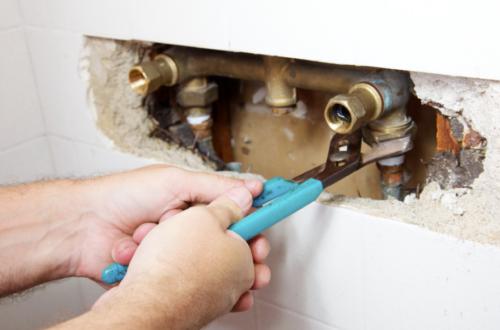Essential Guide to Septic Tank Repairs: Everything You Need to Know
Septic tanks play a crucial role in managing household wastewater in areas not connected to a centralized sewer system. Proper maintenance and regular repairs are essential to ensure the optimal functioning of your septic tank system. In this comprehensive guide, we will delve into the key aspects of septic tank repairs, providing you with valuable insights and tips to keep your system in top shape.
Understanding Your Septic Tank System
Before we delve into the world of septic tank repairs, it is important to have a basic understanding of how your septic tank system works. A septic tank is an underground chamber made of concrete, fiberglass, or plastic that collects and treats wastewater from your household.
The wastewater enters the septic tank through an inlet pipe where it undergoes a natural separation process. Solid waste settles at the bottom of the tank, forming a layer of sludge, while lighter materials like grease and oils float to the surface, forming a layer of scum. The liquid effluent, which lies in the middle, flows out of the tank through an outlet pipe and into the drain field for further treatment and disposal.
Common Septic Tank Problems
Septic tank systems are prone to various issues that can compromise their functionality. Here are some common problems you may encounter:
1. Clogged Pipes
Over time, solid waste and other debris can accumulate in the pipes leading to and from your septic tank, causing blockages. This can result in slow drains, gurgling sounds, and even sewage backups in your home.
2. Drain Field Issues
The drain field is a critical component of your septic system, responsible for further treating and disposing of the liquid effluent. If the drain field becomes saturated or clogged with solid waste, it can lead to the pooling of water on the surface, foul odors, and sewage backups.
3. Septic Tank Leaks
Cracks or leaks in your septic tank can allow wastewater to seep out, contaminating the surrounding soil and groundwater. This not only poses environmental risks but also compromises the efficiency of your septic system.
4. Tree Root Intrusion
The roots of trees and shrubs near your septic tank system can infiltrate the pipes and tank, causing significant damage and blockages. This can lead to backups and sewage overflows if left unaddressed.
Signs That Your Septic System Needs Repair
Being aware of the warning signs can help you identify septic tank problems early on and take prompt action. Here are some indicators that your septic system may require repairs:
- Foul odors around your property, particularly near the septic tank or drain field
- Slow draining sinks, showers, or toilets
- Gurgling sounds coming from the drains
- Sewage backups in your home
- Puddles of water or lush vegetation around the drain field
- Unusually green or spongy grass near the septic tank
Septic Tank Repair and Maintenance
Regular maintenance and timely repairs are crucial to extend the lifespan of your septic tank system and prevent costly issues. Here are some essential steps to keep your septic system in good condition:
1. Regular Pumping
Having your septic tank pumped regularly is essential to remove the accumulated sludge and scum layers. This prevents excessive buildup, reducing the risk of clogs and backups. It is recommended to pump your septic tank every 3-5 years, although the frequency may vary depending on the tank size and household usage.
2. Avoiding Excessive Water Usage
Excessive water usage can overwhelm your septic system, leading to potential issues. Be mindful of your water consumption habits and consider installing water-efficient fixtures and appliances. Spread out laundry and dishwasher loads throughout the week to avoid putting too much strain on your septic tank.
3. Proper Waste Disposal
Only flush down the toilet and drain substances that are biodegradable and septic tank-friendly. Avoid disposing of non-biodegradable items, grease, oils, medications, and harsh chemicals down the drain. These can disrupt the natural breakdown process and harm the bacteria responsible for wastewater treatment in your septic tank.
4. Tree and Shrub Maintenance
Regularly inspect the area around your septic tank and drain field to ensure there are no trees or shrubs with invasive root systems. If you spot any, consider relocating or removing them to prevent potential damage to your septic system.
Frequently Asked Questions (FAQs)
Q: How often should I have my septic tank inspected?
A: It is recommended to have your septic tank inspected by a professional at least once every three years. However, if you notice any signs of trouble, such as foul odors or slow drains, it is advisable to schedule an inspection promptly.
Q: Can I use additives to improve the performance of my septic tank?
A: While there are various septic tank additives available on the market, their effectiveness is often debated. In general, a well-maintained septic system does not require additives. In fact, some additives can disrupt the natural balance of bacteria in your tank, potentially causing more harm than good.
Q: What should I do if I experience a sewage backup in my home?
A: If you encounter a sewage backup, it is crucial to prioritize your safety and the health of your family. Avoid contact with the sewage and evacuate the affected area if necessary. Contact a professional septic tank repair service immediately to assess the situation and perform the necessary repairs.
Conclusion
Proactive maintenance and timely repairs are vital for the efficient and reliable functioning of your septic tank system. By understanding the common problems, recognizing the signs that repair is needed, and implementing proper maintenance practices, you can ensure the longevity of your septic tank and avoid costly issues. Remember, a well-maintained septic tank system contributes to a healthier environment and a happier home.
For more detailed information on septic tank repairs and maintenance, you can visit this informative article.






